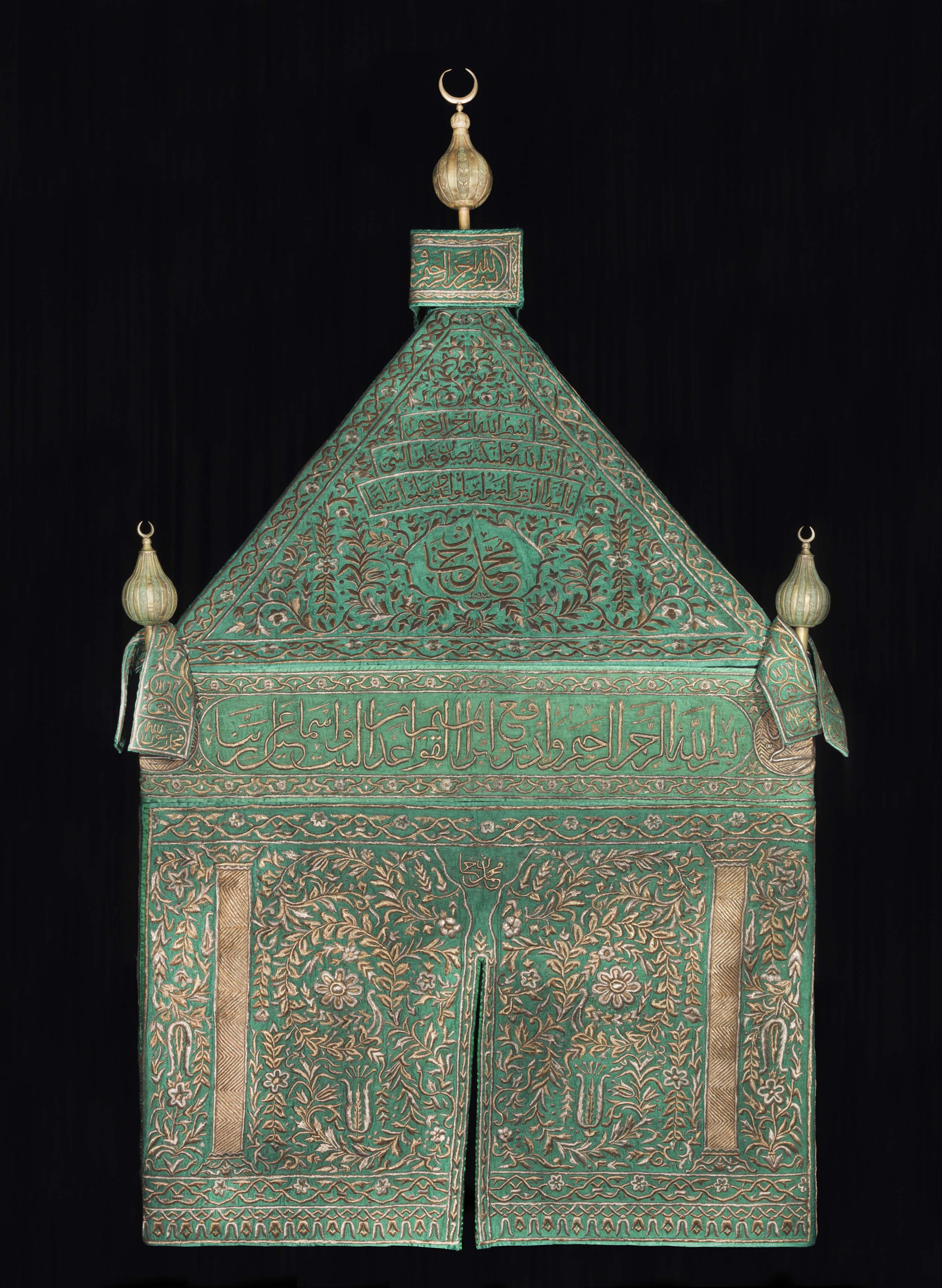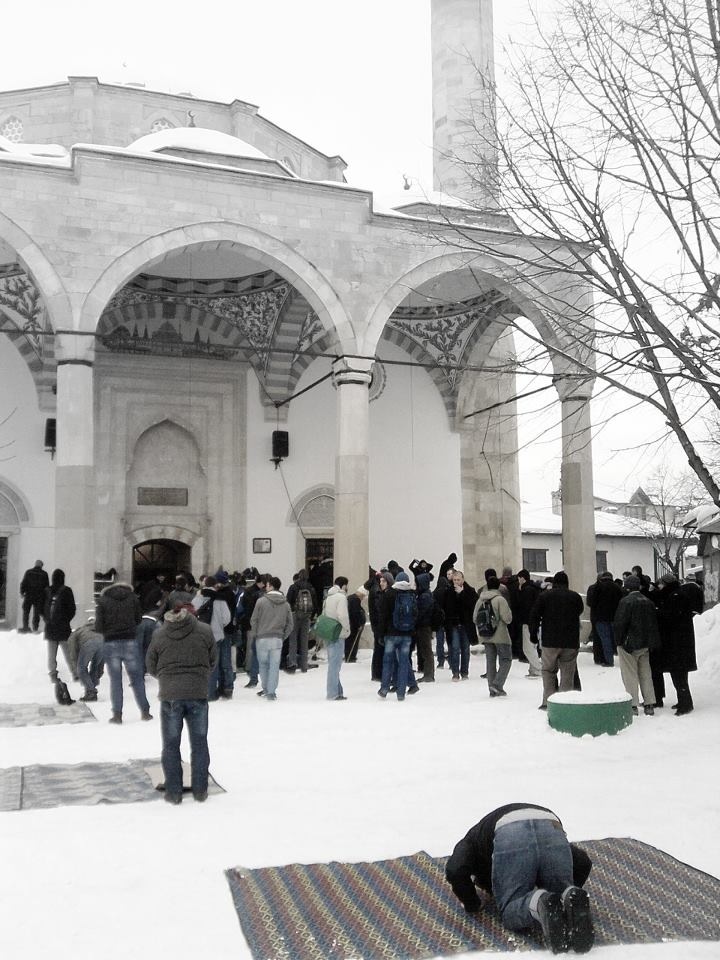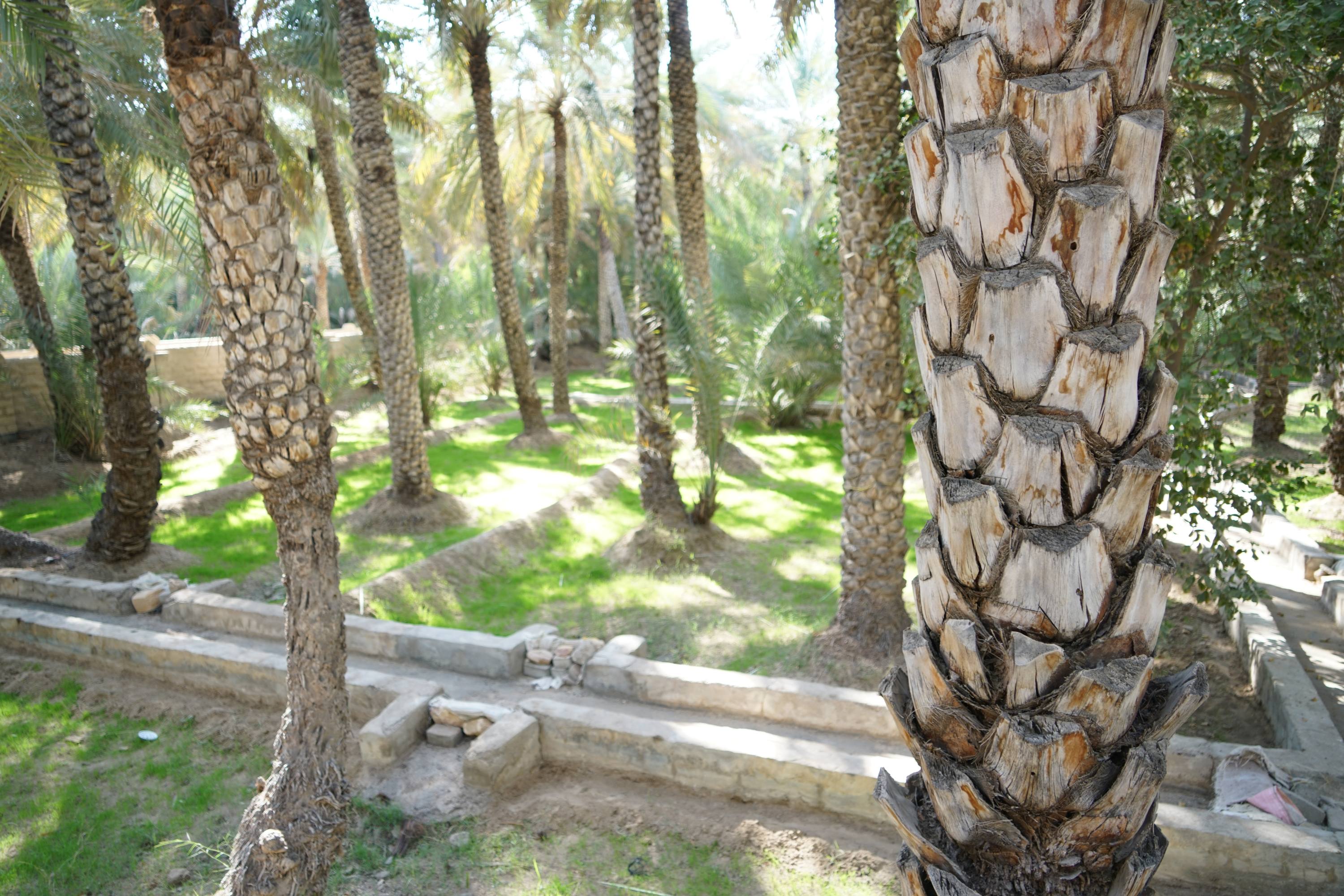|
Saud Bin Abdulaziz Al Saud (1748–1814)
Saud bin Abdulaziz Al Saud (; 1748 – 27 April 1814) ruled the First Saudi State from 1803 to 1814. Saud annexed Mecca and Medina from the Ottoman Empire making him the first Al Saud ruler who received the title of the Custodian of the Two Holy Mosques, servant of the Two Holy Cities. During his rule the state experienced a significant level of strength and expansion for which he was called Saud Al Kabeer or Saud the Great. Early life Saud was born in Diriyah in 1748. He was the eldest son of Abdulaziz bin Muhammad Al Saud, Abdulaziz bin Muhammad. The mother of Saud was a daughter of Uthman bin Mu'ammar, ruler of 'Uyayna, Uyaina. Saud's succession was decided and announced in 1787. From early age Saud began to act as the chief military commander of the Emirate together with his uncle, Abdullah bin Muhammad Al Saud, Abdullah bin Muhammad, who was the father of Turki bin Abdullah bin Muhammad Al Saud, Turki bin Abdullah, the founder of the Emirate of Nejd or the Second Saudi State ... [...More Info...] [...Related Items...] OR: [Wikipedia] [Google] [Baidu] |
Emirate Of Diriyah
The Emirate of Diriyah (), also known as the First Saudi State, was established in February 1727 (1139 AH). In 1744, the emir of Najdi town called Diriyah Muhammad bin Saud and the religious leader Muhammad ibn Abd al-Wahhab formed an alliance to found a socio-religious reform movement to unify the many states of the Arabian Peninsula. Early establishment The House of Saud and its allies quickly rose to become the dominant power in Arabia by first conquering Najd, and then expanding their influence over the eastern coast from Kuwait down to the northern borders of Oman. Furthermore, Saud's forces brought the highlands of 'Asir under their suzerainty, while Muhammad ibn Abd Al Wahhab wrote letters to people and scholars to enter the field of jihad. After many military campaigns, Muhammad bin Saud died in 1765, leaving the leadership to his son, Abdul-Aziz bin Muhammad. Saud's forces went so far as to gain command of the Shi'a holy city of Karbala in 1801. Here they destroyed t ... [...More Info...] [...Related Items...] OR: [Wikipedia] [Google] [Baidu] |
Imam Hussain Ibn Ali
Abū ʿAbd Allāh al-Ḥusayn ibn ʿAlī ibn Abī Ṭālib ( ar, أبو عبد الله الحسين بن علي بن أبي طالب; 10 January 626 – 10 October 680) was a grandson of the Islamic prophet Muhammad and a son of Ali ibn Abi Talib and Muhammad's daughter Fatima, as well as a younger brother of Hasan ibn Ali. He is claimed to be the third Imam of Shia Islam after his brother, Hasan, and before his son, Ali ibn Husayn Zayn al-Abidin. Being a grandson of the prophet, he is a member of the Ahl al-Bayt. He is also considered to be a member of the Ahl al-Kisa, and a participant in the event of Mubahala. Muhammad described him and his brother, Hasan, as "the leaders of the youth of Paradise." During the caliphate of Ali, Husayn accompanied him in wars. After the assassination of Ali, he obeyed his brother in recognizing Hasan–Muawiya treaty, in spite of being suggested to do otherwise. In the nine-year period between Hasan's abdication in AH 41 (660 CE) and his dea ... [...More Info...] [...Related Items...] OR: [Wikipedia] [Google] [Baidu] |
Ibrahim Pasha Of Egypt
Ibrahim Pasha ( tr, Kavalalı İbrahim Paşa; ar, إبراهيم باشا ''Ibrāhīm Bāshā''; 1789 – 10 November 1848) was an Ottoman Albanian general in the Egyptian army and the eldest son of Muhammad Ali, the Wāli and unrecognised Khedive of Egypt and Sudan. He served as a general in the Egyptian army that his father established during his reign, taking his first command of Egyptian forces when he was merely a teenager. In the final year of his life, he succeeded his still-living father as ruler of Egypt and Sudan, owing to the latter's ill health. His rule also extended over the other dominions that his father had brought under Egyptian rule, namely Syria, Hejaz, Morea, Thasos, and Crete. Ibrahim pre-deceased his father, dying 10 November 1848, only four months after acceding to the throne. Upon his father's death the following year, the Egyptian throne passed to Ibrahim's nephew (son of Muhammad Ali's second oldest son), Abbas. Ibrahim remains one of the most ... [...More Info...] [...Related Items...] OR: [Wikipedia] [Google] [Baidu] |
Mamluk Sultanate
The Mamluk Sultanate ( ar, سلطنة المماليك, translit=Salṭanat al-Mamālīk), also known as Mamluk Egypt or the Mamluk Empire, was a state that ruled Egypt, the Levant and the Hejaz (western Arabia) from the mid-13th to early 16th centuries. It was ruled by a military caste of mamluks (manumitted slave soldiers) headed by the sultan. The Abbasid caliphs were the nominal sovereigns. The sultanate was established with the overthrow of the Ayyubid dynasty in Egypt in 1250 and was Ottoman conquest of Egypt, conquered by the Ottoman Empire in 1517. Mamluk history is generally divided into the Turkic peoples, Turkic or Bahri dynasty, Bahri period (1250–1382) and the Circassians, Circassian or Burji dynasty, Burji period (1382–1517), called after the predominant ethnicity or corps of the ruling Mamluks during these respective eras.Levanoni 1995, p. 17. The first rulers of the sultanate hailed from the mamluk regiments of the Ayyubid sultan as-Salih Ayyub (), usurping ... [...More Info...] [...Related Items...] OR: [Wikipedia] [Google] [Baidu] |
Mehemet Ali
Muhammad Ali Pasha al-Mas'ud ibn Agha, also known as Muhammad Ali of Egypt and the Sudan ( sq, Mehmet Ali Pasha, ar, محمد علي باشا, ; ota, محمد علی پاشا المسعود بن آغا; ; 4 March 1769 – 2 August 1849), was the Albanian Ottoman governor and de facto ruler of Egypt from 1805 to 1848, considered the founder of modern Egypt. At the height of his rule, he controlled all of Egypt, Sudan, Hejaz and the Levant. He was a military commander in an Albanian Ottoman force sent to recover Egypt from a French occupation under Napoleon. Following Napoleon's withdrawal, Muhammad Ali rose to power through a series of political maneuvers, and in 1805 he was named ''Wāli'' (viceroy) of Egypt and gained the rank of Pasha. As ''Wāli'', Muhammad Ali attempted to modernize Egypt by instituting dramatic reforms in the military, economic and cultural spheres. He also initiated a violent purge of the Mamluks, consolidating his rule and permanently ending the Mam ... [...More Info...] [...Related Items...] OR: [Wikipedia] [Google] [Baidu] |
Mahmal
A mahmal ( ar, مَحْمَل, maḥmal) is a ceremonial passenger-less litter that was carried on a camel among caravans of pilgrims on the Hajj, the pilgrimage to Mecca which is a sacred duty in Islam. It symbolised the political power of the sultans who sent it, demonstrating their custody of Islam's holy sites. Each mahmal had an intricately embroidered textile cover, or ''sitr''. The tradition dates back at least to the 13th century and ended in the mid-20th. There are many descriptions and photographs of mahmals from 19th century observers of the Hajj. History The word "mahmal" comes from the root حمل (''ḥ-m-l'', "''to carry''"). A mahmal consists of a wooden frame made to fit on a camel, with a pointed top. There were textile coverings placed over it: an ornate processional covering and others for everyday use. These coverings are known as the ''kiswah'' or ''sitr al-mahmal''. The earliest surviving covers, from the Mamluk Sultanate, are yellow, but later instances ... [...More Info...] [...Related Items...] OR: [Wikipedia] [Google] [Baidu] |
Selim III
Selim III ( ota, سليم ثالث, Selim-i sâlis; tr, III. Selim; was the Sultan of the Ottoman Empire from 1789 to 1807. Regarded as an enlightened ruler, the Janissaries eventually deposed and imprisoned him, and placed his cousin Mustafa on the throne as Mustafa IV. Selim was subsequently killed by a group of assassins. Early life Selim III was the son of Sultan Mustafa III and his wife Mihrişah Sultan. His mother Mihrişah Sultan originated in Georgia, and when she became the Valide Sultan, she participated in reforming the government schools and establishing political corporations. His father Ottoman Sultan Mustafa III was very well educated and believed in the necessity of reforms. Mustafa III attempted to create a powerful army during the peacetime with professional, well-educated soldiers. This was primarily motivated by his fear of a Russian invasion. During the Russo-Turkish War, he fell ill and died of a heart attack in 1774. Sultan Mustafa was aware of the f ... [...More Info...] [...Related Items...] OR: [Wikipedia] [Google] [Baidu] |
Friday Prayers
In Islam, Friday prayer or Congregational prayer ( ar, صَلَاة ٱلْجُمُعَة, ') is a prayer ('' ṣalāt'') that Muslims hold every Friday, after noon instead of the Zuhr prayer. Muslims ordinarily pray five times each day according to the sun's sky path regardless of time zones. ''Jumu’ah'' means Friday in the Arabic language. In many Muslim countries, the weekend is inclusive of Fridays, while in others, Fridays are half-days for schools and some workplaces. Meaning It is one of the most exalted Islamic rituals and one of its confirmed obligatory acts. Obligation There is consensus among Muslims regarding the Friday prayer (''salat al-jum‘ah'') being ''wajib'' - required - in accordance with the Quranic verse, as well as the many traditions narrated both by Shi’i and Sunni sources. According to the majority of Sunni schools and some Shiite jurists, Friday prayer is a religious obligation, but their differences were based on whether its obligation is condit ... [...More Info...] [...Related Items...] OR: [Wikipedia] [Google] [Baidu] |
Ottoman Sultan
The sultans of the Ottoman Empire ( tr, Osmanlı padişahları), who were all members of the Ottoman dynasty (House of Osman), ruled over the transcontinental empire from its perceived inception in 1299 to its dissolution in 1922. At its height, the Ottoman Empire spanned an area from Hungary in the north to rebel in the south and from Algeria in the west to Iraq in the east. Administered at first from the city of Söğüt since before 1280 and then from the city of Bursa since 1323 or 1324, the empire's capital was moved to Adrianople (now known as Edirne in English) in 1363 following its conquest by Murad I and then to Constantinople (present-day Istanbul) in 1453 following its conquest by Mehmed II. The Ottoman Empire's early years have been the subject of varying narratives, due to the difficulty of discerning fact from legend. The empire came into existence at the end of the 13th century, and its first ruler (and the namesake of the Empire) was Osman I. According to l ... [...More Info...] [...Related Items...] OR: [Wikipedia] [Google] [Baidu] |
Wahhabi
Wahhabism ( ar, ٱلْوَهَّابِيَةُ, translit=al-Wahhābiyyah) is a Sunni Islamic revivalist and fundamentalist movement associated with the reformist doctrines of the 18th-century Arabian Islamic scholar, theologian, preacher, and activist Muhammad ibn Abd al-Wahhab (). He established the ''Muwahhidun'' movement in the region of Najd in central Arabia as well as South Western Arabia, a reform movement that emphasised purging of rituals related to the veneration of Muslim saints and pilgrimages to their tombs and shrines, which were widespread amongst the people of Najd. Ibn ʿAbd al-Wahhab and his followers were highly inspired by the influential thirteenth-century Hanbali scholar Ibn Taymiyyah (1263–1328 C.E/ 661 – 728 A.H) who called for a return to the purity of the first three generations (''Salaf'') to rid Muslims of inauthentic outgrowths (''bidʻah''), and regarded his works as core scholarly references in theology. While being influenced by their ... [...More Info...] [...Related Items...] OR: [Wikipedia] [Google] [Baidu] |
Buraimi Oasis
ar, وَاحَة ٱلْبُرَيْمِي, Wāḥat Al-Buraymī , native_name_lang = ar , image_skyline = Mezyad Fort.jpg , image_caption = Mezyad Fort in Al Ain (UAE), with Jebel Hafeet, which is partially in the Omani Governorate of Al-Buraimi, in the background , parts = Al-Ain () Al-Buraimi () Tawam ( ar, تَوَام, Tawām), also Tuwwam, Tu'am, or "Al-Buraimi Oasis" ( ar, وَاحَة ٱلْبُرَيْمِي, Wāḥat Al-Buraymī), is a historical oasis region in Eastern Arabia that stretched from, or was located between, the Western Hajar Mountains to the Persian Gulf coast, nowadays forming parts of what is now the United Arab Emirates and western Oman. It is marked by the twin settlements of Al Ain and Al-Buraimi on the UAE-Omani border. Etymology and geography Al-Ain is main settlement in the Eastern Region of the Emirate of Abu Dhabi, located on the country's eastern border with Oman, where the adjacent town of Al-Buraimi is located. ... [...More Info...] [...Related Items...] OR: [Wikipedia] [Google] [Baidu] |
Muscat
Muscat ( ar, مَسْقَط, ) is the capital and most populated city in Oman Oman ( ; ar, عُمَان ' ), officially the Sultanate of Oman ( ar, سلْطنةُ عُمان ), is an Arabian country located in southwestern Asia. It is situated on the southeastern coast of the Arabian Peninsula, and spans the mouth of .... It is the seat of the Governorate of Muscat. According to the National Centre for Statistics and Information (NCSI), the total population of Muscat Governorate was 1.4 million as of September 2018. The metropolitan area spans approximately and includes six Provinces of Oman, provinces called . Known since the early 1st century Anno Domini, AD as an important trading port between the Western world, west and the Eastern world, east, Muscat was ruled by various indigenous tribes as well as foreign powers such as the Sassanid Empire, Persians, the Portuguese Empire and the Ottoman Empire at various points in its history. A regional military power in the ... [...More Info...] [...Related Items...] OR: [Wikipedia] [Google] [Baidu] |




.jpg)



